Paldalmun Market (팔달문시장)
555.1M 2024-10-31
17 Jeongjo-ro 770beon-gil, Paldal-gu, Suwon-si, Gyeonggi-do
There are 9 traditional markets around Suwon's South Gate. Among them, in Paldalmun Market, there is a whole chicken street that stretches for about 400m, so many people visit it. The old-fashioned way of frying the whole chicken in a large cauldron and the unique seasoning preserve its flavor. After visiting other connected markets, you can complete your Suwon tour by walking through the Hwaseong Fortress, a UNESCO World Heritage Site.
Hwaseomun Gate (화서문)
593.0M 2022-12-29
334, Jangan-dong, Paldal-gu, Suwon-si, Gyeonggi-do
+82-31-290-3600
Hwaseomun Gate is the western gate of Hwaseong Fortress, a Treasure. Over the stone mujigae (rainbow) door is a single-story tower gate. Hwaseomun Gate's ongseong (defensive gate) forms a crecent shape, with one side of the ongseong remaining open.
Suwon Hwaseong Cultural Festival (수원화성문화제)
628.5M 2025-07-09
825 Jeongjo-ro, Paldal-gu, Suwon-si, Gyeonggi-do
+82-31-228-3920
Hwaseong Fortress, a UNESCO World Heritage Site, hosts the Suwon Hwaseong Cultural Festival every autumn. The festival’s main event is the “King Jeongjo’s Royal Parade,” a reenactment of King Jeongjo’s procession to pay respects to his father Crown Prince Sado’s tomb. This spectacular event features over 4,000 participants in traditional Joseon-era costumes marching along a 59km route. The “King Jeongjo’s Dasobangwa” program, offering a taste of royal court cuisine served for the Banquet of Lady Hyegyeong-Gung Hong, is especially popular among international tourists. Additionally, the festival includes fortress-building experiences, night tours, and various reenactment events and performances, all linked to Hwaseong Fortress, Suwon.
◎Hwaseong Fortress, Suwon
This planned city was built by King Jeongjo during the Joseon Dynasty. It is considered a pinnacle of Korean fortress culture, incorporating the advanced technologies of its time.
Hwahongmun Gate (화홍문(華虹門))
631.3M 2025-05-22
377 Suwoncheon-ro, Paldal-gu, Suwon-si, Gyeonggi-do
Hwahongmun Gate refers to the northern gate of Hwaseong Fortress among the two main gates installed to control the flow of Suwoncheon Stream that cuts through the fortress. Hwahongmun Gate consists of seven arched watergates in varying sizes. The watergate at the center is larger than the others to control the water flow effectively.
◎ Travel information to meet Hallyu’s charm – TV series “Lovely Runner”
Hwahongmun Gate is known for its beautiful nighttime view, with warm illuminations casting a glow over the gates and walkways. The bridge in front of Hwahongmun, where Sun-jae confessed his feelings to Sol, has become a popular photo spot for fans looking to capture a piece of the romance.
Suwon Hwaseong Fortress [UNESCO World Heritage] (수원 화성 [유네스코 세계유산])
640.6M 2025-08-06
Yeonghwa-dong, Jangan-gu, Suwon-si, Gyeonggi-do
+82-31-290-3600
Suwon was one of four main regional government centers during the Joseon dynasty. Hwaseong Fortress, built to protect the city, was designated as a UNESCO World Cultural Heritage Site on December 12, 1997 for its historical value. The fortress offers various performances daily as well as the Suwon Hwaseong Cultural Festival every fall. The walls stretch for 5,700 kilometers, with Paldalsan Mountain at the center. The fortress, constructed from 1794 to 1796, was built as a display of King Jeongjo’s filial piety towards his father and to build a new pioneer city with its own economic power.
Yeonpo Galbi (연포갈비)
662.0M 2024-12-02
56-1, Jeongjo-ro 906beon-gil, Paldal-gu, Suwon-si, Gyeonggi-do
+82-31-255-1337
This restaurant occupies a remodeled public bath and inn, preserving the original chimney from its bathhouse days. Known for offering Suwon wanggalbi at relatively affordable prices, it also serves galbitang (galbi soup) exclusively during lunchtime on weekdays. Due to limited availability, galbitang often sells out quickly.
Suwon Yeongdong Market (수원 영동시장)
675.7M 2022-07-27
6, Suwoncheon-ro 255beon-gil, Paldal-gu, Suwon-si, Gyeonggi-do
+82-31-251-0171
The neighborhood around Paldalmun Gate serves as the main business district of Suwon, where more than 300 stores and stalls are joined to make a large market. The atmosphere and the physical surroundings help to both keep traditions alive and move into the modern age, which is one of the main aspects of this market that draws in more visitors each year. Since 1917 when the market first opened to the public, the vendors here have specialized in traditional garments, including hanbok (traditional Korean clothes) and accessories. Among 300 stores, 40 stores feature finished hanbok, another 40 stores sell fabric, 70 stores are general clothing store, and the remaining stores sell daily goods, accessories, agricultural and stockbreeding products. In the past, the market was the largest market south of the metropolitan area so people from Suwon, Pyeongtaek, Hwaseong, and Osan frequently visited. An on-going maintenance project to keep the originality of the market began in 2002 and the market now features modernized facilities.
Banghwasuryujeong Pavilion (방화수류정(동북각루))
716.5M 2025-05-22
44-6 Suwoncheon-ro 392beon-gil, Paldal-gu, Suwon-si, Gyeonggi-do
+82-31-228-4672
Banghwasuryujeong Pavilion, officially called Dongbukgangnu Pavilion, was built in 1794 during the construction of Suwon Hwaseong Fortress. It sits atop a hill east of Hwahongmun Gate and offers beautiful views of the surrounding scenery. For this reason, the pavilion received the nickname Banghwasuryujeong, meaning a pavilion where one can "find flowers and stroll among willow trees." The pavilion was once damaged due to flooding and reconstructed in 1848, followed by continuous recovery and preservation efforts. In 2011, the pavilion was designated as Treasure No. 1709. Banghwasuryujeong Pavilion is evaluated as one of the most original architectures in Hwaseong for its unique composition and roof design that offer a different look depending on the viewer's angle. Known to be the spot where King Jeongjo would stop by to rest on his way to Hwaseong Fortress, the pavilion offers a bird's-eye-view of Yeonmudae Post to the east and Janganmun Gate to the west with Paldalsan Mountain in the background.
Janganmun Gate (장안문)
777.0M 2019-12-31
910, Jeongjo-ro, Paldal-gu, Suwon-si, Gyeonggi-do
+82-031-228-4416
Janganmun Gate is the main gate of Hwaseong Fortress at the northern wall. Jangan means capital, implying that Hwaseong Fortress is the secondary capital. Janganmun Gate served as the main gate because the king would pass from this gate when arriving from Hanyang, the capital city, now modern-day Seoul. It is interesting to note that this gate is larger than Sungryemun Gate in Seoul.
Nammun Rodeo Market (남문로데오시장)
797.5M 2025-05-21
88 Haenggung-ro, Paldal-gu, Suwon-si, Gyeonggi-do
Nammun Rodeo Market is a popular spot among youngsters and couples for its unique cafes and Saturday Market, which bring art and culture together. There is a variety of cafes, jewelry shops, noraebang (karaoke rooms), and other stores, making it a great place to visit with the family or on a date.
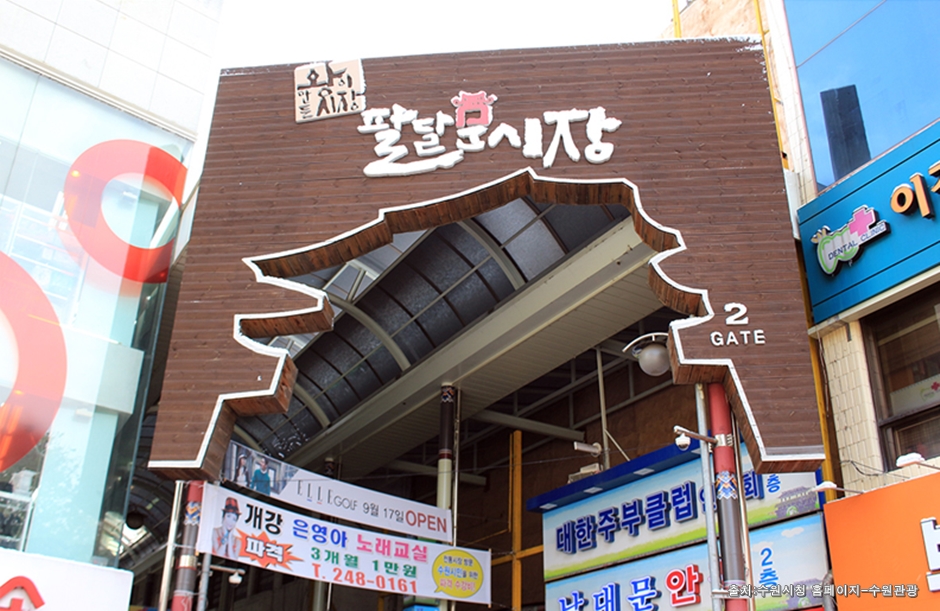
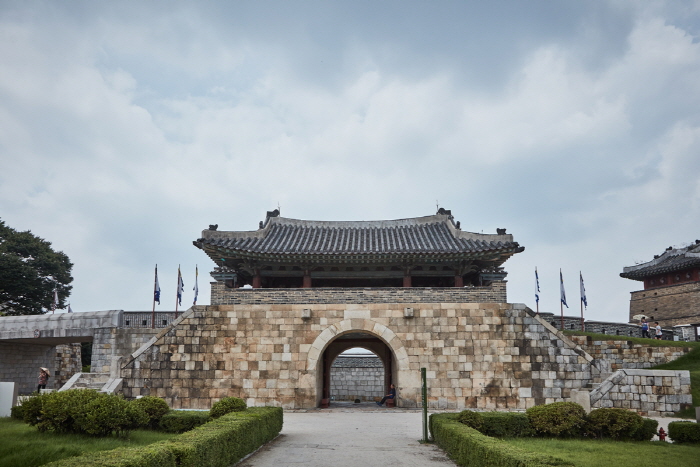
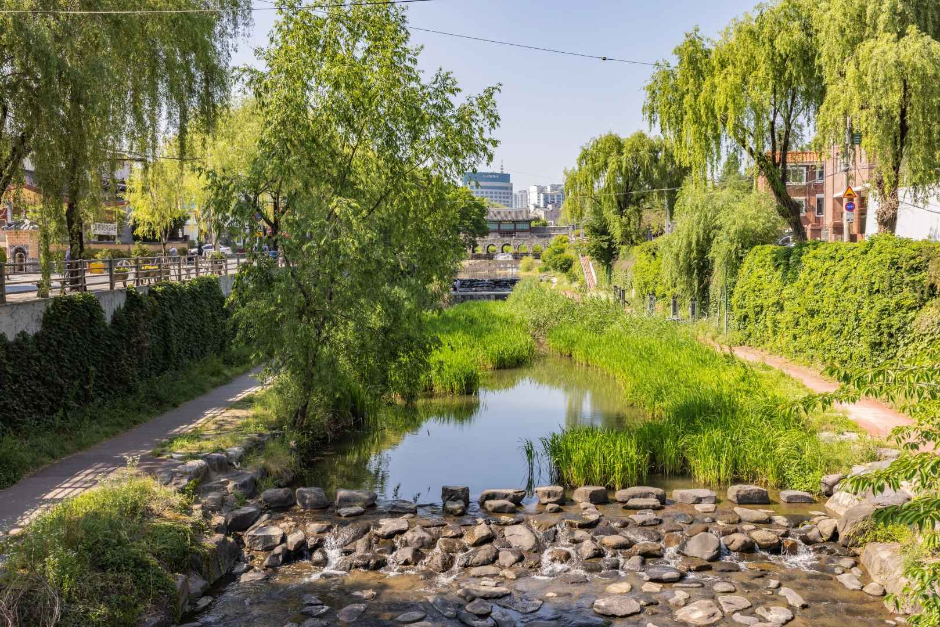
![Suwon Hwaseong Fortress [UNESCO World Heritage] (수원 화성 [유네스코 세계유산])](http://tong.visitkorea.or.kr/cms/resource/36/2613036_image2_1.jpg)
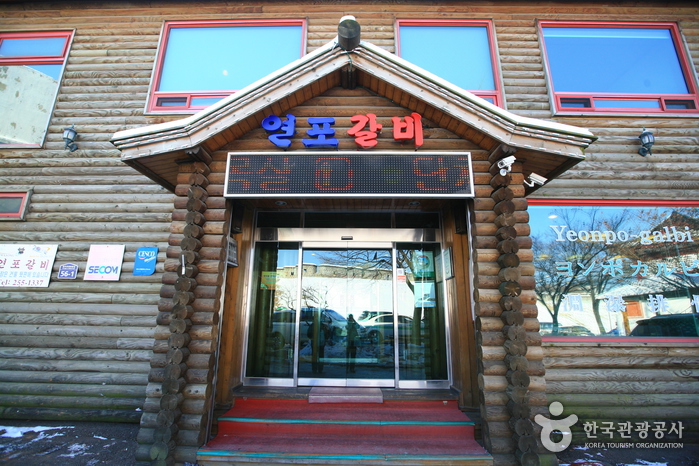
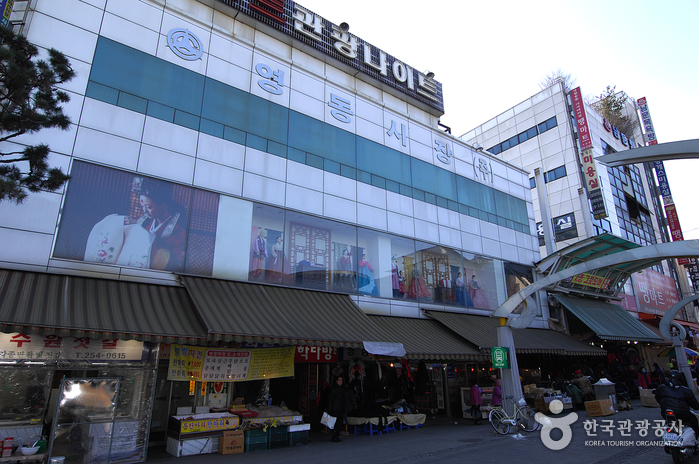

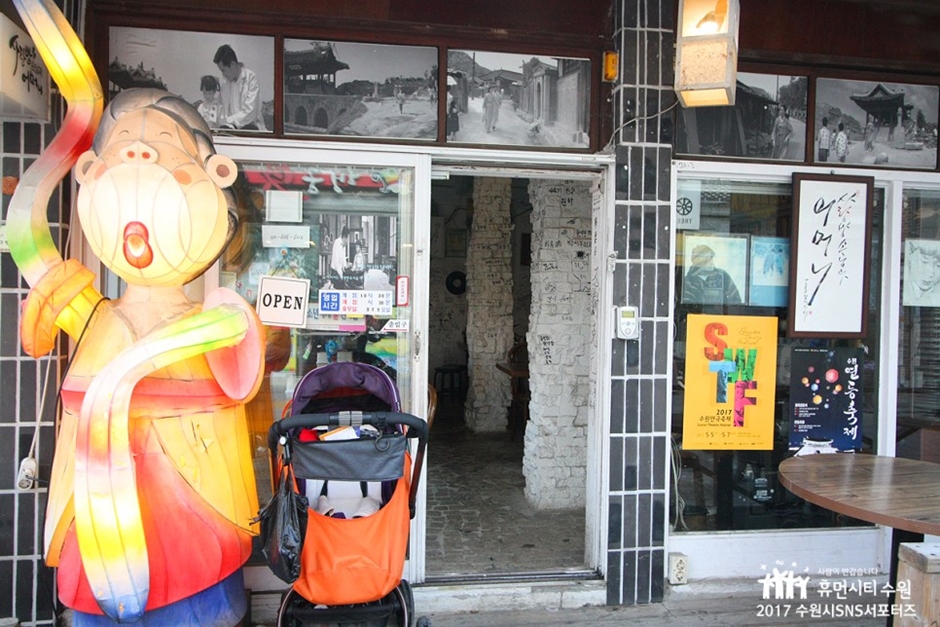
 English
English
 한국어
한국어 日本語
日本語 中文(简体)
中文(简体) Deutsch
Deutsch Français
Français Español
Español Русский
Русский